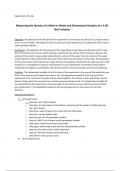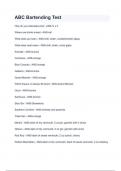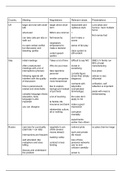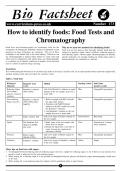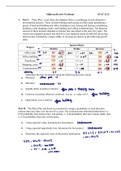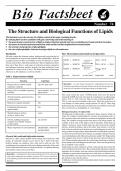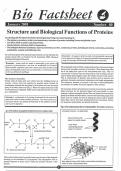CEP Lecture 3 Notes 29-11-2018
1
What is sensory marketing? This cartoon illustrates it quite well. It’s going to be about how to use the senses to
promote products and get people to buy your products. The reading today is by Krishna (2012).
2
What is sensory marketing? That is an approach to advertising that uses the senses to afect consumer’s
perception of a product, judgment of a product, and behaviour towards a product (so whether we are going to
buy the product). They are going to try to increase the chances that you are going to buy their product through
using diferent sense mechanisms. There’s also a research aspect to sensory marketing to fnd out what works
and what doesn’t work in terms of getting people to change their behavior. In order to understand sensory
marketing from psychological perspective we need to understand what sensation is and what perception is and
how those things can afect the behavior of consumers. So it’s a really growing research feld. It’s quite a new
research feld. I’ve got a clip here of Krishna herself who wrote the article for today, talking about sensory
marketing.
There’s a lot of science behind the most successful advertising and marketing campaigns of our time. It’s
science that’s led to a few techniques marketers are using that you probably didn’t even notice. There are 4
hidden techniques:
1. Physical placement of words in an ad. My research shows that rational messages, such as a health claim,
like in this ad for granola bars, work best when placed at the top of an advertisement. While emotional
messages, like taste, work best when physically placed at the bottom. Similarly, emotional messages like hope
in the iconic Barack Obama campaign poster are also more efective at the bottom of the poster.
2. Marketers are also able to change how you feel about their brands with subtle changes to logo design, for
example logos that convey a sense of motion result in better attitudes towards the brand and hold the reader’s
eye longer. A sense of motion plays a role in using the eye to create a subconscious connection to a brand’s
message, as long as that message is consistent for the product’s identity. The right colors also play a role in
creating the right feeling for a brand.
3. Smell plays a very important role for marketers. Smell is one of the most powerful senses in terms of
triggering memories and associations. That lemon smell in a detergent is not there just because we like it. It is
used because many decades ago real lemons were used to clean dishes for their acidic properties.
4. Sound can make the invisible visible. Think about Intel (*intel sound clip*). Intel makes chips that go inside of
computers, never to be seen by the consumer. But mention Intel and immediately its famous fve note chime
comes to mind. It’s a sound that made it one of the most recognizable brands in the world. Because of the
sound, consumers can feel the presence of this invisible chip.
The use of sound, motion, smell, and all aspects of our fve senses are part of sensory marketing. We’ve shown
that once a consumer gets attached to the sensory aspects of a product they are much less likely to give that
product up. Sensory marketing is an evolving feld and researchers are discovering new ways to use the senses
to improve engagement. We’ve even looked at how to design roadsigns with a sense of movement to better
grab a driver’s attention, improve reaction times, and reduce accidents. So this science has broader applications
as well.
3
Sensory marketing is an expanding new feld. Lots and lots of research being done in this area. Obviously most
of the research that has been done has been focused on the sense of vision because print advertising has the
longest history and visual elements are easy to manipulate in an advertisement. As we talked about in the frst
lecture for the course, print advertising was one of the earliest ways to try to get people to buy products. So
that was obviously more relatable to vision research. But there are lots of newer marketing strategies that are
being developed that incorporate a lot more sensory elements. Here’s an example, video on Coca Cola’s
Drinkable Campaign (next time you’re thirsty, drink an ad). This is an attempt to introduce a lot more sensory
elements to advertising. You can hear the sound of the coke, as well as they are trying to get people to actually
taste the coke at the same time so they try to incorporate a lot more sense elements. In today’s lecture we’re
going to look at some of the research that has been done on how to incorporate sense elements into marketing.
4
In Krishna’s reading she introduces the conceptual framework of sensory marketing. She breaks the elements
down into steps. First of all, sensation on the left side. These are our 5 sense elements. We have more than 5
senses now. We have now established that we have a number of other senses such as our vestibular system
which gives us a sense of balance. We have a kynesthesia sense of movement. So we have other senses as well
but focus on these main 5 senses today. Sensation is just being the physical stimulus out in the world as
received by our receptors or an organism its receptors. It’s about hearing a sound or feeling a touch on your
skin or the sight of an image reaching our eyes. Sensation is not the same as perception. Stimuli can be
received by our receptors but it doesn’t mean that we are going to perceive them in the way that they are
actually in the world. Perception is the way that we understand and make sense of these sensations, these
stimuli that are being received by our bodies. It’s how we interpret that stimulus and whether we recognize it or
not. I don’t know if you listen to the radio or not anymore but I listen to the radio. If you ever had the experience
of turning on the radio in the middle of the song, the frst sensation that you get is you hear the noise of the
song. It takes you a split second to recognize that it’s music and then maybe a little bit longer to understand or
recognize the song/beat that is being played. So these things are not the same, sensation and perception are
quite seperate processes. It’s also the case that not all stimuli that exist in the world that are received by our
bodies are actually perceived by us. So when you got dressed this morning you probably put your clothes on,
you probably felt the feeling of your clothes on your skin, you don’t go around all day constantly feeling that, or
constantly being aware of that, although you probably are right at the moment because I just made you aware
of it again. So, we don’t always see all of the stimuli or perceive all of the stimuli that are around there. Another
example is that you can be out on a walk with somebody and they can go “did you see that” and I say “no I
, didn’t see it” even though I was there at that moment and it was being received by the receptors. So we don’t
always perceive everything that’s out there either. Not all sensations, even if we perceive them, are correctly
perceived. I don’t like spiders. I’m really afraid of spiders. So if I get a light touch on my skin somewhere I can’t
see it, I often misinterpret that as a spider and freak out. So we don’t always perceive correctly those stimuli
either. We are going to talk a little bit about emotion and cognition and these other things later but the main
thing I really want to talk about is sensation and perception today and how it’s used in marketing.
5
Let’s talk about the sense of touch. This sense is called haptics. It’s the frst sense that we develop when we are
in our mother’s utero. The embryo needs to feel where it is and therefore to navigate within its environment so
that’s our frst sense to develop. The last one to develop is vision. Seems that touch is a very important sense
for babies and very important in early life. Young children want to be touched and held because it gives them a
sense of comfort and security. But it’s also the case that people difer in the amount that they like to be
touched. You might know people who don’t really like being touched and you might know people who are kind
of touchy feely cuddly people who want to be touched a lot. So in touch there’s individual variation as well.
6
In terms of consumer behavior, we can think about touch in several ways. The frst one is whether people like to
touch products that they may or may not buy in a store, so whether we can touch a product or not can often
afect whether people will actually go and buy them. I am certainly one of those people. I am going to a clothing
store, I may or may not have the intention to buy any clothes, but I’ll be touching the clothes and seeing what
they feel like. In terms of consumer behavior, there is considered to be 2 aspects to touching products, 2 kind of
functions that they serve for us: instrumental and autotelic need. We talked about the instrumental need in the
second lecture when we talked about material possessions. People often have a need to touch things because
they want to fgure out whether a product is going to fulfl its purpose (instrumental), they have got an
instrumental need and they are looking at if from their perspective. Linstrom did a study on this where he gave
people a remote control for television. The remote controls were identical in every way except that one of them
had a steal plate inside that made them heavier than the other, otherwise identical. Participants prefered
obviously the heavier one, they thought that the lighter one was broken, that it wasn’t going to be ft for
purpose. So even when they told those participants that they are both fne, they are both functional, they still
prefered the heavier one over the lighter one. So people are using their sense of touch to determine whether a
product is going to be ft for purpose, whether it’s actually going to fulfl the instrumental need that they want it
to fulfl. The other aspect or function of touch is autotelic need, where people just touch things/products for its
own sake, because they enjoy touching things. Maybe it fulflls an emotional need (makes you feel comfortable,
makes you feel good) or it’s just a compulsive need to touch things. It’s not really related to instrumental need
at all.
7
Peck & Childers developed a scale where they try to measure people’s needs to touch things in terms of
products in stores and so on. You can see through these items on the scale, that some of the items relate to
autotelic need (A), some of them to instrumental need (I). People would see these items and they would answer
on a scale from -3 (strongly disagree) through to +3 (strongly agree). And then their score in the end is how
much they need to touch a product in a store. Very high score means you’re somebody who likes to wander
through a store and touch things. If you look at a couple of those items and think about yourself, if for example
the frst example describes you very well you would get a high score on that kind of scale. They’ve developed a
scale which is very useful because one of the questions that people have had about internet shopping is
perhaps people don’t want to buy things on the internet because they can’t touch the products frst of all. What
they found by using this scale is that it’s actually only the people who are high on the need for touch, who are
frustrated when they can’t touch items on the internet, it’s less for people who score low on this scale, it’s not
so necessary for them to touch things.
8
Another element we can look at instead of people touching products is people touching people in a consumer
shopping experience. What efects does that have on consumer behavior? If we are touched by another person,
while we’re purchasing something, it generally has a positive efect on our consumer experience and on our
purchasing behavior. Crusco & Wetzel did study about if waitress touches you on the shoulder or arm while they
are serving you, you give her more money/they get better tips. So if you need more money and you are a
waitress, that’s a tip for you, you will get more money when you touch people. Another study that was done by
Fisher et al. was if a librarian touched a person when they were wandering and checking out books in the libary,
then those costumers rated the service as being better, they enjoyed the service as being better. In terms of
generosity they did this strange study were people who got professional massages or they didn’t get massaged
and meanwhile they were ofered the chance to engage in a reciprocal gift-giving situation with some other
people. People who were touched by someone, who were just massaged, were much more generous in their
gift-giving situation than people who hadn’t have the massage. It does seem to say that people touching people
while you’re shopping is going to have a positive efect on consumerism.
9
Another element that’s being looked at is what about products that are touching other products, in store or in
shopping trolley, does that have an efect on consumer behavior? It does, but it depends what products are
touching, it matters what product touches what. If one of the products is considered to be disgusting, we do not
want to buy anything that has touched it. The kinds of disgusting things that they have looked at – none of
these things are disgusting before they get used, that’s interesting - are things like cat litter, sigarettes, rubbish
bags, tampons. If those are on the shelf touching other products people are much less likely to buy products
that have been touching, they don’t want them touch them in their supermarket trolley. If they are next to each
other but not touching it doesn’t afect their purchasing behavior. It gives idea that somehow just by touching
1
What is sensory marketing? This cartoon illustrates it quite well. It’s going to be about how to use the senses to
promote products and get people to buy your products. The reading today is by Krishna (2012).
2
What is sensory marketing? That is an approach to advertising that uses the senses to afect consumer’s
perception of a product, judgment of a product, and behaviour towards a product (so whether we are going to
buy the product). They are going to try to increase the chances that you are going to buy their product through
using diferent sense mechanisms. There’s also a research aspect to sensory marketing to fnd out what works
and what doesn’t work in terms of getting people to change their behavior. In order to understand sensory
marketing from psychological perspective we need to understand what sensation is and what perception is and
how those things can afect the behavior of consumers. So it’s a really growing research feld. It’s quite a new
research feld. I’ve got a clip here of Krishna herself who wrote the article for today, talking about sensory
marketing.
There’s a lot of science behind the most successful advertising and marketing campaigns of our time. It’s
science that’s led to a few techniques marketers are using that you probably didn’t even notice. There are 4
hidden techniques:
1. Physical placement of words in an ad. My research shows that rational messages, such as a health claim,
like in this ad for granola bars, work best when placed at the top of an advertisement. While emotional
messages, like taste, work best when physically placed at the bottom. Similarly, emotional messages like hope
in the iconic Barack Obama campaign poster are also more efective at the bottom of the poster.
2. Marketers are also able to change how you feel about their brands with subtle changes to logo design, for
example logos that convey a sense of motion result in better attitudes towards the brand and hold the reader’s
eye longer. A sense of motion plays a role in using the eye to create a subconscious connection to a brand’s
message, as long as that message is consistent for the product’s identity. The right colors also play a role in
creating the right feeling for a brand.
3. Smell plays a very important role for marketers. Smell is one of the most powerful senses in terms of
triggering memories and associations. That lemon smell in a detergent is not there just because we like it. It is
used because many decades ago real lemons were used to clean dishes for their acidic properties.
4. Sound can make the invisible visible. Think about Intel (*intel sound clip*). Intel makes chips that go inside of
computers, never to be seen by the consumer. But mention Intel and immediately its famous fve note chime
comes to mind. It’s a sound that made it one of the most recognizable brands in the world. Because of the
sound, consumers can feel the presence of this invisible chip.
The use of sound, motion, smell, and all aspects of our fve senses are part of sensory marketing. We’ve shown
that once a consumer gets attached to the sensory aspects of a product they are much less likely to give that
product up. Sensory marketing is an evolving feld and researchers are discovering new ways to use the senses
to improve engagement. We’ve even looked at how to design roadsigns with a sense of movement to better
grab a driver’s attention, improve reaction times, and reduce accidents. So this science has broader applications
as well.
3
Sensory marketing is an expanding new feld. Lots and lots of research being done in this area. Obviously most
of the research that has been done has been focused on the sense of vision because print advertising has the
longest history and visual elements are easy to manipulate in an advertisement. As we talked about in the frst
lecture for the course, print advertising was one of the earliest ways to try to get people to buy products. So
that was obviously more relatable to vision research. But there are lots of newer marketing strategies that are
being developed that incorporate a lot more sensory elements. Here’s an example, video on Coca Cola’s
Drinkable Campaign (next time you’re thirsty, drink an ad). This is an attempt to introduce a lot more sensory
elements to advertising. You can hear the sound of the coke, as well as they are trying to get people to actually
taste the coke at the same time so they try to incorporate a lot more sense elements. In today’s lecture we’re
going to look at some of the research that has been done on how to incorporate sense elements into marketing.
4
In Krishna’s reading she introduces the conceptual framework of sensory marketing. She breaks the elements
down into steps. First of all, sensation on the left side. These are our 5 sense elements. We have more than 5
senses now. We have now established that we have a number of other senses such as our vestibular system
which gives us a sense of balance. We have a kynesthesia sense of movement. So we have other senses as well
but focus on these main 5 senses today. Sensation is just being the physical stimulus out in the world as
received by our receptors or an organism its receptors. It’s about hearing a sound or feeling a touch on your
skin or the sight of an image reaching our eyes. Sensation is not the same as perception. Stimuli can be
received by our receptors but it doesn’t mean that we are going to perceive them in the way that they are
actually in the world. Perception is the way that we understand and make sense of these sensations, these
stimuli that are being received by our bodies. It’s how we interpret that stimulus and whether we recognize it or
not. I don’t know if you listen to the radio or not anymore but I listen to the radio. If you ever had the experience
of turning on the radio in the middle of the song, the frst sensation that you get is you hear the noise of the
song. It takes you a split second to recognize that it’s music and then maybe a little bit longer to understand or
recognize the song/beat that is being played. So these things are not the same, sensation and perception are
quite seperate processes. It’s also the case that not all stimuli that exist in the world that are received by our
bodies are actually perceived by us. So when you got dressed this morning you probably put your clothes on,
you probably felt the feeling of your clothes on your skin, you don’t go around all day constantly feeling that, or
constantly being aware of that, although you probably are right at the moment because I just made you aware
of it again. So, we don’t always see all of the stimuli or perceive all of the stimuli that are around there. Another
example is that you can be out on a walk with somebody and they can go “did you see that” and I say “no I
, didn’t see it” even though I was there at that moment and it was being received by the receptors. So we don’t
always perceive everything that’s out there either. Not all sensations, even if we perceive them, are correctly
perceived. I don’t like spiders. I’m really afraid of spiders. So if I get a light touch on my skin somewhere I can’t
see it, I often misinterpret that as a spider and freak out. So we don’t always perceive correctly those stimuli
either. We are going to talk a little bit about emotion and cognition and these other things later but the main
thing I really want to talk about is sensation and perception today and how it’s used in marketing.
5
Let’s talk about the sense of touch. This sense is called haptics. It’s the frst sense that we develop when we are
in our mother’s utero. The embryo needs to feel where it is and therefore to navigate within its environment so
that’s our frst sense to develop. The last one to develop is vision. Seems that touch is a very important sense
for babies and very important in early life. Young children want to be touched and held because it gives them a
sense of comfort and security. But it’s also the case that people difer in the amount that they like to be
touched. You might know people who don’t really like being touched and you might know people who are kind
of touchy feely cuddly people who want to be touched a lot. So in touch there’s individual variation as well.
6
In terms of consumer behavior, we can think about touch in several ways. The frst one is whether people like to
touch products that they may or may not buy in a store, so whether we can touch a product or not can often
afect whether people will actually go and buy them. I am certainly one of those people. I am going to a clothing
store, I may or may not have the intention to buy any clothes, but I’ll be touching the clothes and seeing what
they feel like. In terms of consumer behavior, there is considered to be 2 aspects to touching products, 2 kind of
functions that they serve for us: instrumental and autotelic need. We talked about the instrumental need in the
second lecture when we talked about material possessions. People often have a need to touch things because
they want to fgure out whether a product is going to fulfl its purpose (instrumental), they have got an
instrumental need and they are looking at if from their perspective. Linstrom did a study on this where he gave
people a remote control for television. The remote controls were identical in every way except that one of them
had a steal plate inside that made them heavier than the other, otherwise identical. Participants prefered
obviously the heavier one, they thought that the lighter one was broken, that it wasn’t going to be ft for
purpose. So even when they told those participants that they are both fne, they are both functional, they still
prefered the heavier one over the lighter one. So people are using their sense of touch to determine whether a
product is going to be ft for purpose, whether it’s actually going to fulfl the instrumental need that they want it
to fulfl. The other aspect or function of touch is autotelic need, where people just touch things/products for its
own sake, because they enjoy touching things. Maybe it fulflls an emotional need (makes you feel comfortable,
makes you feel good) or it’s just a compulsive need to touch things. It’s not really related to instrumental need
at all.
7
Peck & Childers developed a scale where they try to measure people’s needs to touch things in terms of
products in stores and so on. You can see through these items on the scale, that some of the items relate to
autotelic need (A), some of them to instrumental need (I). People would see these items and they would answer
on a scale from -3 (strongly disagree) through to +3 (strongly agree). And then their score in the end is how
much they need to touch a product in a store. Very high score means you’re somebody who likes to wander
through a store and touch things. If you look at a couple of those items and think about yourself, if for example
the frst example describes you very well you would get a high score on that kind of scale. They’ve developed a
scale which is very useful because one of the questions that people have had about internet shopping is
perhaps people don’t want to buy things on the internet because they can’t touch the products frst of all. What
they found by using this scale is that it’s actually only the people who are high on the need for touch, who are
frustrated when they can’t touch items on the internet, it’s less for people who score low on this scale, it’s not
so necessary for them to touch things.
8
Another element we can look at instead of people touching products is people touching people in a consumer
shopping experience. What efects does that have on consumer behavior? If we are touched by another person,
while we’re purchasing something, it generally has a positive efect on our consumer experience and on our
purchasing behavior. Crusco & Wetzel did study about if waitress touches you on the shoulder or arm while they
are serving you, you give her more money/they get better tips. So if you need more money and you are a
waitress, that’s a tip for you, you will get more money when you touch people. Another study that was done by
Fisher et al. was if a librarian touched a person when they were wandering and checking out books in the libary,
then those costumers rated the service as being better, they enjoyed the service as being better. In terms of
generosity they did this strange study were people who got professional massages or they didn’t get massaged
and meanwhile they were ofered the chance to engage in a reciprocal gift-giving situation with some other
people. People who were touched by someone, who were just massaged, were much more generous in their
gift-giving situation than people who hadn’t have the massage. It does seem to say that people touching people
while you’re shopping is going to have a positive efect on consumerism.
9
Another element that’s being looked at is what about products that are touching other products, in store or in
shopping trolley, does that have an efect on consumer behavior? It does, but it depends what products are
touching, it matters what product touches what. If one of the products is considered to be disgusting, we do not
want to buy anything that has touched it. The kinds of disgusting things that they have looked at – none of
these things are disgusting before they get used, that’s interesting - are things like cat litter, sigarettes, rubbish
bags, tampons. If those are on the shelf touching other products people are much less likely to buy products
that have been touching, they don’t want them touch them in their supermarket trolley. If they are next to each
other but not touching it doesn’t afect their purchasing behavior. It gives idea that somehow just by touching



